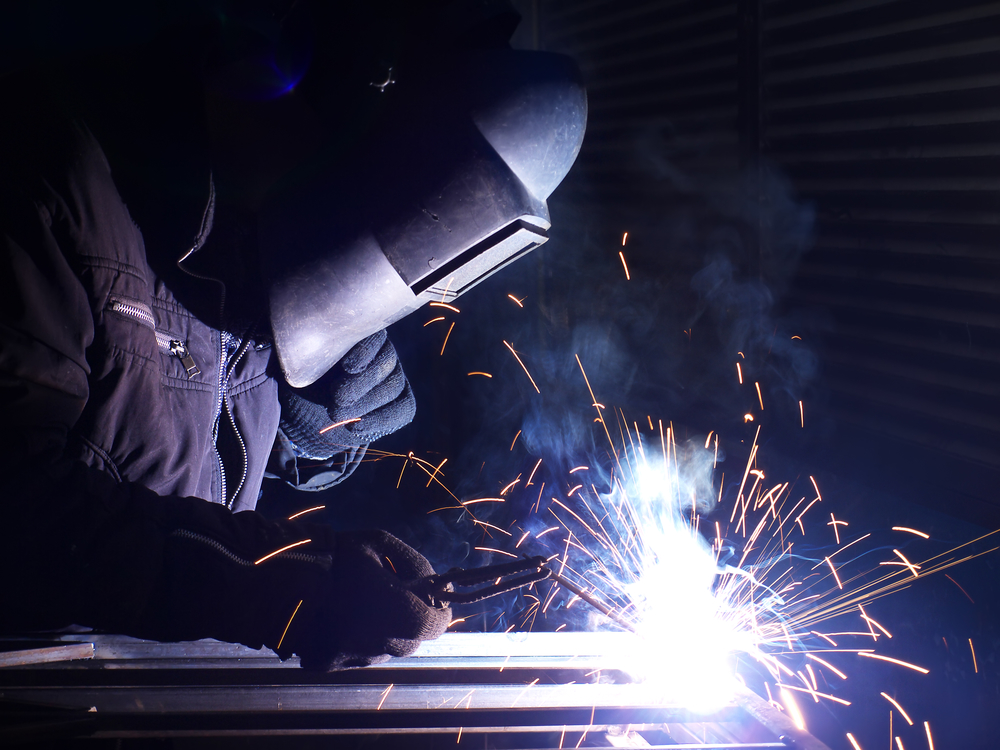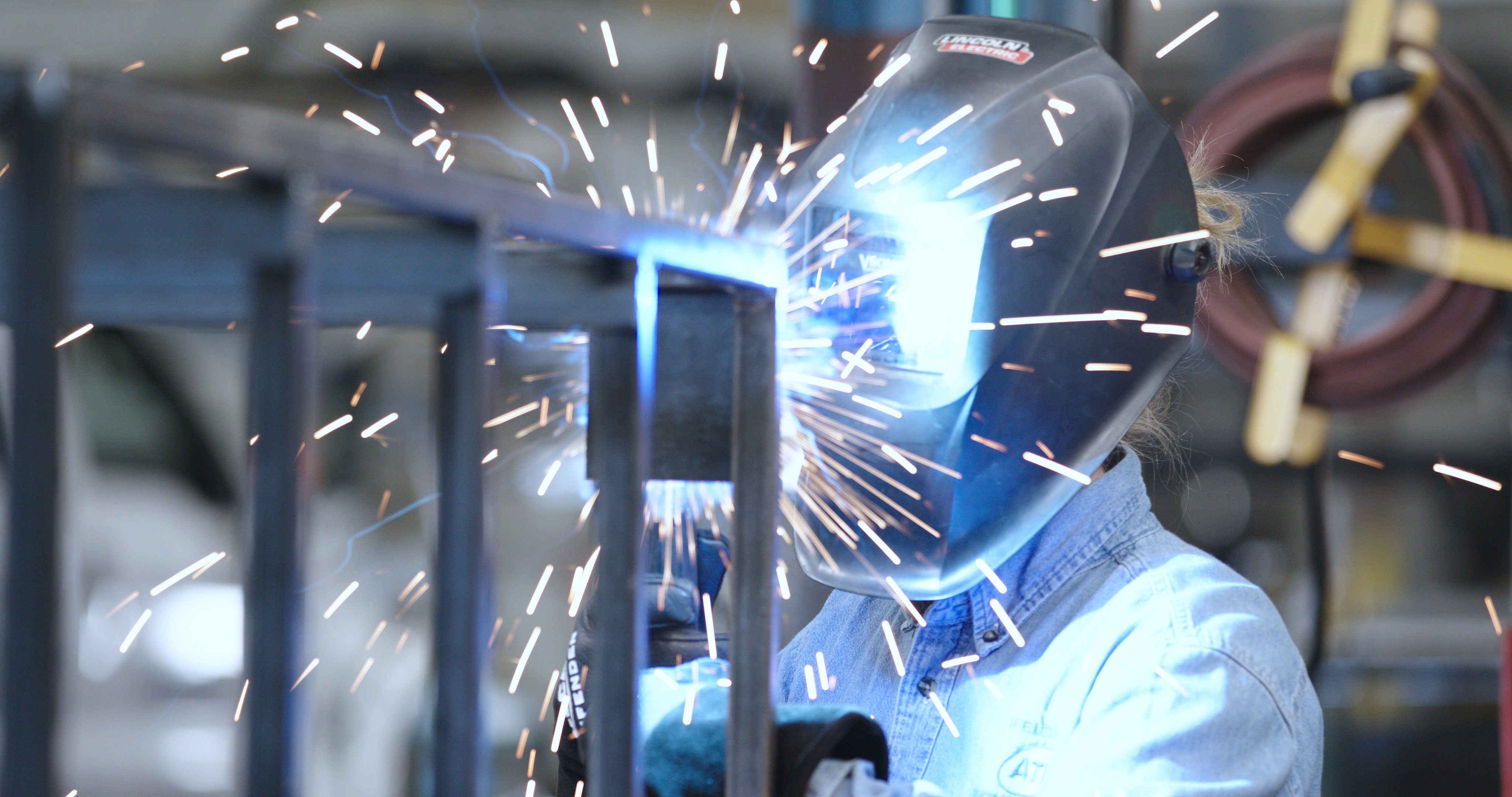Typical Welding Fixing Issues and How to Address Them Successfully
Welding repair services frequently experience a series of concerns that can jeopardize the honesty of the end product. Usual troubles include inadequate penetration, porosity, and misalignment, to name a few. Each issue offers special obstacles that need certain methods for resolution. Comprehending these problems is crucial for welders intending to improve their skills and outcomes. This conversation will certainly discover these typical welding fixing concerns and efficient approaches to address them.
Insufficient Infiltration
Poor infiltration takes place when the weld metal stops working to completely fuse with the base material, leading to weak joints and prospective structural failings. This issue commonly comes from insufficient warm input, incorrect electrode angle, or inappropriate welding rate. Welders may encounter poor penetration due to a miscalculation of the needed specifications for a specific material thickness or type. In addition, contamination on the base material's surface area can impede reliable bonding, aggravating the issue. To deal with poor infiltration, welders should ensure ideal setups on their equipment and maintain a tidy work surface. Normal assessment of welds is recommended to determine any kind of deficiencies early, permitting for timely corrections and the avoidance of endangered architectural stability in bonded settings up.
Porosity
Porosity is a common problem in bonded joints that manifests as little gas bubbles entraped within the weld metal. This flaw can endanger the stability of the weld, leading to minimized toughness and possible failing under stress and anxiety. Montana Mobile Welding and Repair Belgrade Welding. Porosity commonly occurs from contamination, wetness, or improper welding methods, which permit gases to get away right into the molten weld pool. To deal with porosity, welders ought to ensure appropriate surface area prep work, preserve a clean functioning atmosphere, and make use of ideal welding specifications. Furthermore, selecting the appropriate filler product and protecting gas can minimize gas entrapment. Regular evaluation and screening of welds can aid identify porosity early, assuring prompt rehabilitative actions are taken, thus protecting the top quality and dependability of the bonded structure
Misalignment
Imbalance in welding can emerge from numerous variables, including incorrect setup and thermal development. Comprehending the origin is crucial for reliable resolution. A number of correction strategies are available to straighten elements and guarantee architectural integrity.
Root causes of Misalignment
Welding imbalance usually stems from a range of underlying concerns that can endanger structural stability. One primary reason is improper fit-up of elements before welding, which can cause gaps and unequal surfaces. Variants in thermal expansion throughout the welding procedure can also cause distortion, especially if the materials being joined have various coefficients of expansion. Furthermore, poor clamping and fixturing may stop working to hold parts securely in position, resulting in activity during welding. Poorly conserved tools, consisting of welding machines and devices, might present variances in the weld grain, further contributing to imbalance. Lastly, operator error, stemming from inadequate training or experience, can also play a considerable role in producing misaligned welds.
Correction Techniques Readily Available
Addressing misalignment successfully calls for a combination of restorative methods customized to the certain problems at hand. One common method is making use of jigs or components to hold parts in the right setting during welding, making sure regular placement. Additionally, pre-heating the products can help in reducing distortion and boost fit-up. For substantial misalignment, mechanical realignment strategies, such as utilizing hydraulic jacks or clamps, can be used to correct the position before welding. Post-weld heat therapy might likewise be essential to ease tensions brought on by imbalance. Finally, mindful examination and modification throughout the configuration stage can avoid imbalance issues from becoming substantial troubles, promoting a smoother welding procedure and boosting general architectural honesty.
Distortion
Distortion is a typical challenge in welding that can develop from various aspects, consisting of unequal cooling and heating. Comprehending the sources of distortion is essential for executing effective avoidance methods. Resolving this concern not just improves structural honesty but likewise improves the total top quality of the weld.
Reasons of Distortion
When based on the extreme warmth of welding, products frequently go through adjustments that can bring about distortion. This phenomenon mainly develops from thermal expansion and tightening during the welding procedure. As the weld area heats up, the product expands; upon air conditioning, it acquires, which can create internal tensions. Additionally, irregular heating across a work surface can intensify these stress and anxieties, resulting in warping or flexing. The kind of product likewise plays a considerable role; steels with differing thermal conductivity and coefficients of growth may respond in different ways, causing uncertain distortions. Additionally, bad joint design and inadequate fixturing can add to imbalance during welding, boosting the possibility of distortion. Comprehending these causes is necessary for efficient welding repair work and avoidance techniques.
Prevention Techniques
Effective avoidance methods for distortion throughout welding emphasis on regulating warm input and ensuring appropriate joint style. Maintaining a constant warmth input helps to lessen thermal expansion and tightening, which can bring about distortion. Utilizing strategies such as pre-heating the workpiece can also lower the temperature slope, advertising uniform heating. Furthermore, picking suitable joint styles, such as T-joints or lap joints, can boost security and reduce anxiety focus. Carrying out correct fixturing to secure the workpieces in area further aids in keeping alignment during the welding procedure. Finally, staggered welding series can disperse warm a lot more equally, avoiding localized distortion. By using these techniques, welders can considerably lower the likelihood of distortion and improve the general high quality of their welds.
Splitting
Cracking is an usual concern encountered in welding repair services, often resulting from various aspects such as incorrect cooling prices, material option, or poor joint preparation. The incident of splits can substantially compromise the stability of the weld, resulting in prospective failures throughout operation. To resolve this issue, welders need to first analyze the source, making sure that products are suitable and suitably selected for the certain application. In addition, regulating the air conditioning rate throughout the welding procedure is important; quick cooling can generate anxiety and lead to fracturing. Proper joint design and prep work likewise add to decreasing the danger. Carrying out these strategies can boost weld top quality and resilience, inevitably reducing the chance of fracturing in finished weldments.

Insufficient Fusion
A significant issue in welding repair work is insufficient blend, which occurs when the weld metal does not appropriately bond with the base material or previous weld passes - Montana Mobile Welding and Repair Belgrade Welding. This flaw can bring about weak points in the joint, potentially compromising the stability of the welded structure. Aspects adding to insufficient blend include insufficient warm input, incorrect welding strategy, and contamination of the surface areas being signed up with. To address this concern go now effectively, welders must guarantee appropriate pre-weld cleansing and surface prep work, as well as adjust their welding criteria to achieve adequate penetration and combination. Regular assessment during the welding process can likewise help identify incomplete fusion early, permitting timely rehabilitative measures to boost the general high quality of the weld
Overheating
While welding repair services can boost structural stability, overheating provides a considerable difficulty that can result in material deterioration. Excessive heat throughout welding can modify the mechanical properties of steels, causing lowered toughness, raised brittleness, and bending. This sensation is specifically crucial in high-stress applications where architectural integrity is extremely important. Recognizing getting too hot can entail visual examinations for discoloration or distortion, along with checking temperature during the welding procedure. To reduce the risks related to overheating, welders should use proper methods, such as controlling heat input, adjusting traveling rate, and using appropriate filler products. Furthermore, implementing pre- and post-weld warm treatments can aid recover product buildings and boost the total quality of the repair, ensuring lasting performance and safety.
Frequently Asked Inquiries
What Are the Usual Signs of a Welding Flaw?

How Can I Check My Welds for Top quality?
To examine welds for high quality, one can utilize visual evaluations, ultrasonic testing, and radiographic methods. Each strategy assures structural stability, determines flaws, and validates adherence to defined criteria, ultimately improving the dependability of the bonded joints.
What Safety Safety Measures Should I Take While Welding?
When welding, one ought to prioritize safety and security by putting on appropriate personal protective equipment, guaranteeing appropriate air flow, securing flammable products away, maintaining a tidy office, and being conscious of surroundings to stop crashes and injuries.
Can I Fix a Weld Without Remodeling the Entire Joint?
Repairing a weld without redoing the whole joint is possible, relying on the damage (Montana Mobile Welding and Repair Welding). Methods such as grinding, including filler product, or using a welding process can successfully deal with details defects while maintaining the surrounding structure
What Devices Are Important for Reliable Welding Repairs?
Necessary tools for efficient welding repairs include a welding maker, cord brush, grinder, protective equipment, clamps, and filler materials. Each device plays a vital function in ensuring quality and safety and security throughout the repair procedure. Porosity usually occurs from contamination, wetness, or inappropriate welding techniques, which enable gases to run away right into the molten weld swimming pool. Inadequately kept tools, see this here consisting of welding devices and tools, might introduce variances in the weld bead, additional adding to imbalance. When subjected to the intense warm of welding, materials usually undergo adjustments that can lead to distortion. Cracking is a common issue experienced in welding fixings, frequently resulting from different variables such as incorrect air conditioning prices, product selection, or poor joint preparation. A considerable concern in welding repair services is insufficient fusion, which occurs when the weld metal does not effectively bond with the base product or previous weld passes.
Comments on “How misalignment happens and how Belgrade Fabrication corrects it”